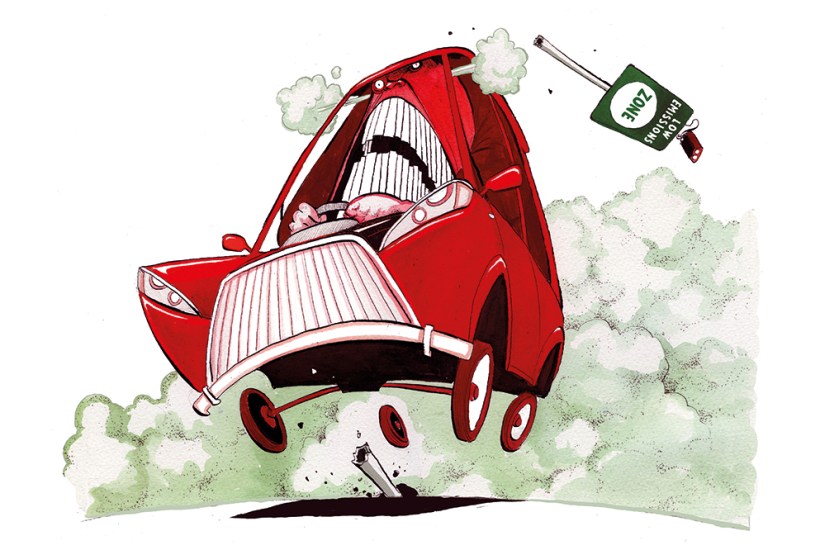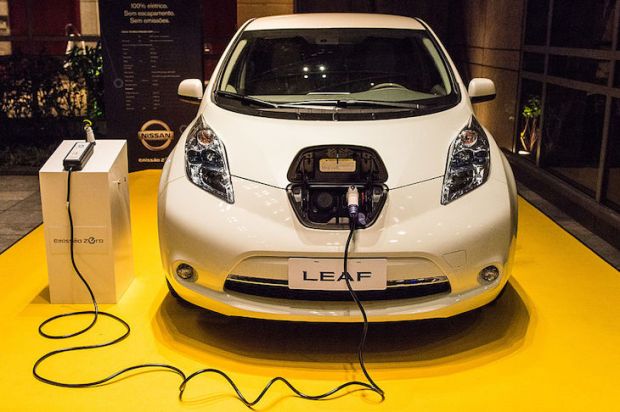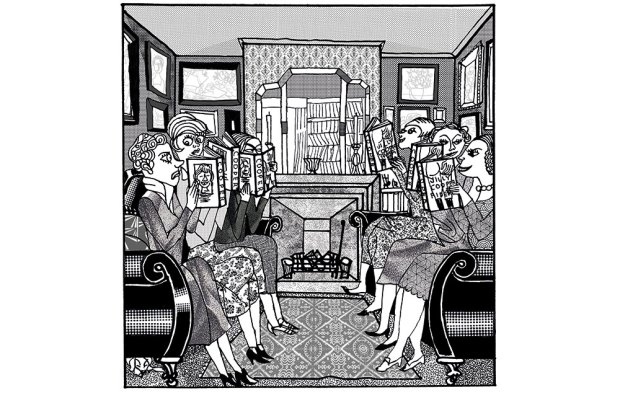Since Boris Johnson quit as an MP last month, Labour has been confident about winning the Uxbridge and South Ruislip by-election. Yet not so confident that Danny Beales, the party’s candidate, felt he could get through the campaign without lambasting Sadiq Khan’s plans to expand London’s Ultra Low Emission Zone (Ulez) to cover the capital. ‘It’s not the right time to extend Ulez to outer London,’ he told a hustings a fortnight ago. ‘It’s just not.’
From the end of next month, anyone driving a non-compliant vehicle – which in practice means most diesel cars sold before 2015 and petrol cars sold before 2005 – is liable to pay a daily charge of £12.50. If they fail to do this, and are caught on a network of number-plate recognition cameras, they are liable to pay a fine of £180. Taking fees and fines together, Ulez raised £224 million last year – a figure which will almost certainly rocket upon expansion to the whole of London.
The London mayor may be refusing to back down on his signature policy, but many others in the Labour party have realised that Ulez is a political disaster for the working people whose support it needs to win next year’s general election.
People such as Tracy Buckle, one of many thousands of small-business owners who rely on road vehicles, but whose lives are about to be made a misery because of the Ulez expansion. She runs a family gardening business, Everlush Lawn Care, in Beckenham. ‘We have two vans, one of which is only five years old, but when I put the registration number into the computer it shows up as non-compliant,’ she says. ‘It would cost us £600 a month to pay the Ulez charges, so we are thinking of downsizing the business. The van cost us £20,000, and we can’t afford to replace it. My daughter-in-law is a teacher who drives six miles to work in Orpington. She can’t afford to replace her car, and the only alternative is to take three buses.’
The phrase ‘war on motorists’ has often been overused, not least by drivers who feel aggrieved after being caught speeding. But hostilities have reached a level at which it is hard for ordinary drivers not to wonder whether there is a systematic campaign to ease them out of their vehicles – or else to milk them for revenue.
It is not just London and Ulez: low emission zones, low traffic neighbourhoods and parking, bus lane and box junction fines are proliferating across the country. Birmingham has had a low emission zone since 2021, Bristol since November. Glasgow began enforcing its zone last month. Cambridge is planning a £5 a day congestion fee, while Oxford and Canterbury will soon limit motorists from driving between one area of their city and another.
Ostensibly, Ulez, like all these schemes, is about air quality. Khan’s office claims, as justification for the extension, that central London has seen since 2019 a reduction of 46 per cent in nitrogen oxides and a 41 per cent reduction in PM 2.5 pollution (particulates which are less than 2.5 micrometres in diameter). You don’t have to sniff too hard, however, to smell a rat. The mayor’s study arrived at these figures by comparing actual roadside measurements with what it guesses pollution levels would have been had there been no Ulez for cars. Yet the graph showing the predicted path of emissions in 2020 and 2021 without Ulez looks remarkably flat – in spite of a collapse in traffic due to the pandemic. According to the mayor’s modelling, emissions would have fallen by 10 per cent in 2020, the year of two lockdowns. Department for Transport data shows that traffic in central London decreased by much more than this in 2020 – by 22 per cent in Westminster, for example, and 19 per cent in Camden. Pollution might also have been expected to fall thanks to a suspension of construction work.
A more independent source is an Imperial College study which looked at pollution in central London for 12 weeks before and 12 weeks after the original Ulez was introduced in 2019. It found that overall nitrogen oxide levels fell by just 3 per cent and there was no significant reduction in PM 2.5 pollution. In some sites, pollution actually worsened. One of the authors concluded: ‘Our research suggests that a Ulez on its own is not an effective strategy to improve air quality.’
In fact, air pollution has been on a long downward trend for more than 50 years, beginning long before Ulez. Nationwide, emissions of nitrogen oxides have fallen by 77 per cent and PM 2.5s by 85 per cent since 1970 – a result of less coal-burning, cleaner vehicles and many other factors. Cars have become steadily cleaner over that period, though not to the extent that would justify charging a new car nothing.
This is what has offended so many people about Ulez: its highly regressive nature. While the owners of old cars are hammered, the £12.50 daily charge does not fall on the owners of supercars who turn up every summer to speed around the streets of Kensington. Nor does it fall on the owners of electric cars, even though the vast bulk of particulate pollution emitted by vehicles comes from brakes and tyres, not engines.
Khan claims to have the public on his side for expanding Ulez, and there are certainly a large number of young non-motorists in London who are not directly exposed to the charges. But it all rather depends on how you ask the question. A YouGov poll commissioned by the mayor asked people whether or not they supported Ulez expansion, beginning with the statement that it was being enlarged ‘to tackle air pollution’. It found that 51 per cent were in favour of the scheme being implemented and 27 per cent were against. However, the Conservative party commissioned its own YouGov poll, this time prefacing the question with the statement that it was being introduced to raise extra revenue. The situation was reversed, with 34 per cent saying it should be expanded and 51 per cent saying it shouldn’t.
There is a growing backlash against Ulez expansion. The Tories’ new mayoral candidate, Susan Hall, has pledged that, if elected, she will ensure ‘Sadiq Khan’s disastrous Ulez expansion will stop on day one. No ifs, no buts’. Several Conservative-controlled councils have also launched a judicial review of the scheme. But it would be a mistake to see the war on motorists as a partisan affair. Councils of all colours have set their sights on drivers to raise revenue, as their grants from central government have been whittled away. In London in 2021, 7.5 million penalty tickets (for parking, infringements of bus lanes, box junctions and others) were handed out, a rise of 41 per cent in a single year. Across the country, councils are raising £800,000 a day in parking fines.
Until May’s local elections, the Conservatives were proposing to introduce a traffic scheme in Canterbury which would split the city into zones, with large fines for residents who drove from one zone to another. Council leader Ben Fitter-Harding, who had championed the scheme, lost his seat as a result.
The concept of low traffic neighbourhoods, where access to side roads is blocked off and through traffic kept to main roads, is nothing new, and until recently such schemes attracted little controversy. What is different is the scale of the schemes, isolating whole neighbourhoods, and the use of ubiquitous penalty charge notices.
What’s also new is the disturbing tendency for objectors to these anti-motorist schemes to be dismissed as followers of right-wing conspiracies – or as being in association with the vandals who have been creeping out at night to destroy cameras being installed for Ulez.
In Oxford, plans for a low traffic neighbourhood would mean that motorists who needed to travel a short distance to, say, a super-market would be forced to undertake a long diversion via the bypass. When, understandably, the plan inspired a protest march, local drivers were bewildered to find their objections treated as a far-right conspiracy – ‘How 15-minute cities turned into an international conspiracy theory’, asserted a CNN headline about the march. True, this being Oxford, the demonstration did attract some high-profile outsiders, and opponents have exaggerated by calling the scheme a ‘climate lockdown’. But surely residents are entitled to complain about something that will have a huge impact on their livelihoods without being treated as if they are somehow in cahoots with conspiracy theorists.
In any case, those who assert that Ulez, low traffic neighbourhoods and congestion charges are about something larger than mere traffic management have a point. The government’s target to achieve net zero by 2050 is only going to intensify the war on motorists. It is already becoming clear that, short of a miracle breakthrough in battery technology, net zero is not compatible with motoring for the masses. The idea that electric cars would be on a cost parity with petrol and diesel ones by 2024 – promoted by Bloomberg among others just two years ago – has proven a forlorn hope. Not only are electric cars much more expensive to buy, they also cost more to run at current petrol prices. They will become even more costly once the government – inevitably – seeks to make up for the £28 billion a year in fuel duty that it stands to lose as petrol and diesel cars are forced off the road. Moreover, electric vehicles aren’t really carbon-neutral or anything like it. Once the industry is forced to decarbonise the steel, plastics and battery materials which go into the cars, purchase costs will be going upwards too.
Volkswagen is already complaining about a ‘general reluctance to buy electric cars’ and, beyond Tesla, shares in manufacturers have slumped over the past year. Shares in Polestar and China’s Xpeng are down by more than half. As reality has set in, it has become clear there is a limited market for these cars.
While the banning of petrol and diesel cars tends to steal headlines, it is less understood that part of the plan for net zero involves the outright reduction in use of road transport. In its Sixth Carbon Budget, the government’s Climate Change Committee writes: ‘Effective demand-side policy is also essential – we identify significant opportunities, and advantages, to reducing travel demand, but this will not happen without firm policies.’ In its net-zero strategy for 2021, the government sets an ambition for half of all journeys in towns and cities to be walked or cycled by 2030. Given that in 2021, 57 per cent of such journeys in England were by car, 32 per cent walking, 2 per cent by bicycle, 4 per cent by bus and 3 per cent by train, this envisages quite a change.
Making life awkward for motorists may come to be seen as a form of preparatory work for what lies ahead – weaning the greater part of the population off their cars altogether. But motorists are not going to go quietly.
Got something to add? Join the discussion and comment below.
Get 10 issues for just $10
Subscribe to The Spectator Australia today for the next 10 magazine issues, plus full online access, for just $10.
You might disagree with half of it, but you’ll enjoy reading all of it. Try your first month for free, then just $2 a week for the remainder of your first year.














Comments
Don't miss out
Join the conversation with other Spectator Australia readers. Subscribe to leave a comment.
SUBSCRIBEAlready a subscriber? Log in